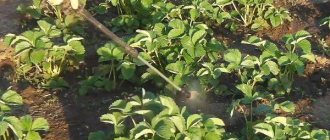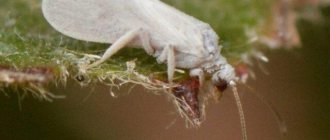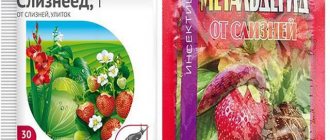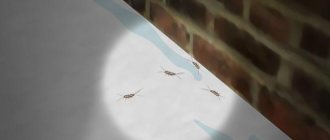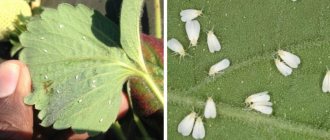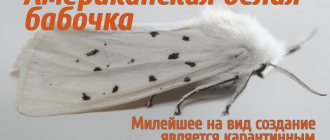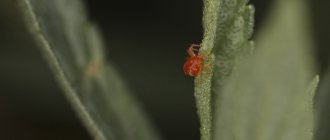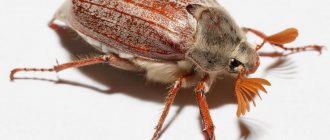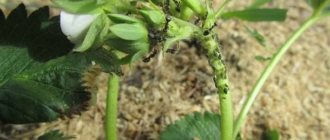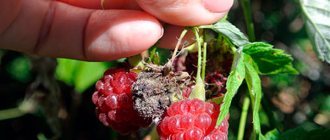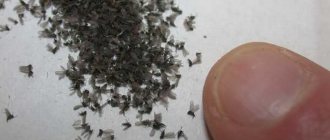The slobbering penna is one of the frequently occurring garden pests. They appear mainly from June to September. They love to eat beautiful crops. For example, vegetable and flower crops can become food for this pest. Usually, they are located where high humidity accumulates. In greenhouses, greenhouses, waterlogged lowlands and beds overgrown with weeds.
The pest received this unusual name due to its unusual form of wintering. They survive the cold season in a liquid resembling foam or saliva. It protects against predators, beneficial insects (for example, from being eaten by ladybugs), and from treatment with chemicals. And when the phase of recovery from hibernation begins (usually in May), the invasion of leafhoppers (an alternative name for the pest) completely destroys the crop.
The greatest damage that these pests cause is infection and destruction of the entire crop even before entering the fruiting stage. Due to plant poisoning, the leaves change shape, color, then their growth stops, they wither, and then die completely. Cicadas pierce the stem, drink the juice and release their poisonous liquid. They live in places where leaves begin to grow, shoots and pedicels.
An adult develops in about a month to two months. At the end of September, the female lays eggs in the bark of trees and dies.
The most popular and widespread species is the green pennitsa. This species is capable of completely destroying an entire young garden. In addition, the green pennitsa is a carrier of a huge number of infections and diseases , from which plants/trees take a very long time to recover.
Therefore, it is very important not only to know how to deal with this type of pest, but also to properly care for your garden in order to prevent even the occurrence of this pest.
What does the slobbering cicada look like?
The official name of the cicada is the common slobber or common slobber. People also call this winged insect a slobber.
The butterfly has light yellow wings with white spots. She lays eggs in the petioles of bushes. The larvae are enveloped in foamy liquid.
The body of an adult representative of the species is stocky and flattened, the length does not exceed 6 mm. A characteristic feature of strawberry pennies is their variety of colors; more than 20 variants are known. The most common colors are brown, olive and yellowish. Green, red and brown individuals are also found; each has a bandage on its body. The pattern may consist of geometric shapes, stripes and spots.
The head is quite large in size relative to the body, the frontal plate is triangular in shape, and the crown is rounded. Consumes food through the proboscis. Mouthparts are sucking type. The pronotum is wide and long, towards the end it begins to diverge to the sides. The abdomen is completely closed thanks to leathery elytra that fold into the shape of a house. The wings and upper body are covered with sparse hair. The insect jumps well. Spines and bristles form on the limbs.
The common pennitsa lives in most countries of Europe, Russia, Asia, Japan and North Africa. The species was brought to us from Canada and the USA.
The insect can run and fly, but when it feels threatened, it makes a powerful jump.
Insects feed on plant juices; a special secretion is secreted from their abdomen, the composition of which is enriched with mucins. These are polysaccharides - the main components of salivary secretion. Thanks to it, the substance is viscous and elastic. There are also small spiracles on the abdomen, which at the right moment squeeze out air, forming a lump of numerous sticky bubbles; this is mucus in the form of foam on strawberries. As necessary, this foamy layer is replenished and performs several vital functions for the larvae:
- The moist cover prevents the offspring from drying out on sunny days.
- When processing strawberries and other berries, the effects of chemicals become more difficult.
- Insects easily tolerate low and high temperatures.
The larva develops in 50 days, during which time it is constantly in the foam nest.
Symptoms of damage:
- leaves wrinkle and wither;
- the ovaries are deformed.
They fight pennies by spraying strawberries with a solution of laundry soap.
Description of the insect
The leafhopper is an insect from the order Homoptera, widespread in Europe, Asia, North America and Africa. Sometimes the pest is found in the harsh climate of the northern regions. The pennywort settles on wild and cultivated plants.
The insect is a jumping moth with triangular wings, similar in appearance to a moth butterfly. The body length of an adult is 5–8 mm. The color is gray, brown or olive. The wings, covered with fine fluff, are folded into a small house. The insect's head is large and equipped with a proboscis for feeding. The butterfly can fly and run. In case of danger, jumps to a height of up to 70 cm.
Once a year, each female lays up to 40 eggs, from which larvae 3–4 mm long hatch. This butterfly does not have a pupa development stage. Larval caterpillars begin to suck juices from plant stems immediately after emerging from the eggs. Their habitat is covered with thick white foam. This kind of cocoon serves as protection for young insects from the external environment, predators and poisons.
Each larva turns into a butterfly by autumn. Females lay eggs, which survive the winter in plant debris and hatch when the weather warms in April-May. The insect completes its development in 30–40 days.
How to deal with drool on strawberries
Basic methods of fighting cicadas:
- Remove the affected fragments of the bush, the amount of organic and mineral fertilizing should be reduced.
- It is effective to use predators in the fight, for example, ladybugs and lacewings.
- An infusion of tansy, tobacco, wormwood or petunia with shavings of laundry soap is effective. It is necessary to carefully process the leaf blades on the underside, as well as the soil near the trunk and the area where the roots are approximately located.
- If cicadas have attacked strawberry varieties growing at home, it is necessary to place plants with strong odors nearby. The most effective are lovage, lemon balm, lavender and thyme.
- For pennies, it is effective to use chemical insecticidal aerosols. Based on reviews from agronomists, the most effective drugs are Bona Forte brand products and Permethrin aerosol.
- In non-residential premises, you can use a solution from a Dutch manufacturer called Fufanon-Nova, which is an alternative to Actelik.
- To irrigate bushes, you can use the Hungarian chemical preparation of contact-intestinal action - Kinmiks.
In the fight against cicadas, adherence to agrotechnical practices is no less effective. When getting rid of insects, it is worth using an integrated approach: chemical, folk and biological preparations.
Chemical treatment
To effectively combat slobber, chemicals are often used. This is due to the fact that the insect is quite resistant to aggressive environmental factors. However, manufacturers annually release substances that will provide the desired and sustainable result.
- Karbofos is sold in two forms: liquid and powder. It is enough to dilute in water and irrigate the affected strawberry bushes with the resulting solution.
- Fluffy lime or the usual slaked lime. Sold in large volumes. For 30 kg of product you will need to pay no more than 300 rubles. The powder must be scattered in damaged areas after the main treatment with chemicals. It is also recommended to carefully cultivate the soil among the bushes.
- Commander is a liquid designed to combat the Colorado potato beetle, but it has also been shown to be effective against the pennies. The cost of 30 ml is approximately 100 rubles.
To prevent re-infestation by pentilica, the crop should be treated with wood ash. This procedure must be carried out only after harvesting.
It is prohibited to irrigate crops with chemicals during the growing season.
Folk remedies for drooling pennies
There are many folk recipes that can effectively fight various types of cicadas, including pennies.
The main ones:
- Garlic infusion. 1 cup of chopped garlic cloves must be poured with 10 liters of water. During the day, the infusion should be infused in a dark, cool place. The resulting composition is used to carefully treat the affected areas.
- Mustard solution. To prepare the solution you will need 50 g of dry mustard and 5 liters of water, mix the components thoroughly and pour them over the diseased bushes.
- Laundry soap solution. You need to add shavings of laundry soap to several liters of clean water. The solution should be concentrated and cloudy in color. Not only the bush is irrigated with the resulting composition, but the pennies themselves are also additionally processed.
How to fight mechanically
The simplest and yet most effective method of control is to collect the larvae of pennies by hand. You can do this with gloves and plastic bags on your hands.
Another effective method, but at the same time traumatic for the plant, is treatment with a powerful stream of water. The cicadas will die under water pressure.
Pest control methods
The slobbering pennitsa has no taste preferences; it feeds on grains, flowers, vegetables, strawberries, currants, grapes and fruit trees. In total, there are about 170 plants that are damaged by the phytophage. As a result of damage to leaves and stems, places for various viruses and diseases to penetrate. Pennywort is a carrier of the jaundice virus, which infects peach. As a result of the sap being sucked out by a large colony of pests, the plant lags behind in development, the leaves curl, the ovaries develop poorly, and the vegetative organs are deformed. How to deal with the slobbering pennitsa?
There are several methods to quickly and safely destroy the pest.
Chemical
If there is a large accumulation of insects, insecticides cannot be avoided; for the treatment of infected crops, it is recommended: Aktara, Karbofos, Intavir, Kinmiks. The drugs are diluted according to the instructions and sprayed in the morning.
Folk remedies
To maintain the purity of vegetables and fruits, you can destroy pests using natural means. An effective measure to combat foamy bib is to use a solution of laundry soap (200 g of product per 10 liters of water). Infusions of tansy and wormwood help against the pest (pour 0.5 kg of herb into 10 liters of boiling water, leave for 3-4 hours). A good result is obtained by treating with garlic infusion - 1 glass per bucket of water, leave for 1-1.5 hours.
Advice. You can sprinkle wood ash directly onto the foam lumps. This is detrimental to the larvae.
The pest often settles on strawberries so as not to spoil the crop with chemicals; foam nests are easily washed off with water, and insects are collected by hand.
Preventive actions
It is always easier to prevent the appearance of insects than to get rid of them. It is necessary to regularly inspect plants for the presence of insects. To prevent the formation of foam on strawberry leaves, it is necessary to follow not only all the rules of care, but also promptly treat the crops with special preparations.
Effective preventive manipulations for the appearance of pennies:
- Treat the soil with steam, using semi-steam treatment effectively.
- Weed control and timely removal.
- To prevent foam from forming on strawberry bushes, when planting, you should maintain an interval between seedlings. Among dense plantings, the probability of damage increases significantly.
- Damaged, dried parts of the plant should be regularly removed and destroyed.
Having figured out what kind of drool is on strawberries, you need to act immediately. It is better to prevent pests from appearing than to fight them later. To prevent the appearance of pennies, it is recommended:
- remove weeds in a timely manner;
- do not plant densely;
- apply semi-fallow tillage.
Good care will ensure the health of the plants, which means they will not be afraid of enemies.
It is best to prevent a problem rather than fight it after the fact. Prevention is one of the main measures to combat slobbering pennies.
To prevent damage to your plants, it is important to both comply with care standards and timely treatment of strawberries using special products.
Through numerous trials, the following effective tips were derived:
- when weeds appear, they must be removed in a timely manner;
- pruning dried and damaged areas of plants;
- soil treatment using the semi-steam method;
- Maintaining a sufficient distance between bushes helps prevent the formation of foam on the foliage. A dense bed has a much greater chance of developing parasites, as well as various diseases.
Chemical based products
Proper use of chemicals greatly increases the chances of success. These remedies are among the most effective because parasites show good resistance to external factors.
The development of drugs takes into account this feature of insects.
Current use:
- Commander: First of all, the purpose of the drug is to combat Colorado potato beetles, but good results are also observed for the pennies. You can buy it in liquid form.
- Karbofos: can be either in liquid or powder form. To treat affected areas, it is necessary to dilute the composition with water.
- Slaked lime or fluffed lime: can be purchased in large quantities, usually 30 kg. Upon completion of chemical treatment, this powder is scattered on the affected area.
Wood ash acts as a preventative measure. It is used exclusively after picking berries.
The use of chemicals is strictly not recommended during the growing season.
Folk remedies
Among the large number of folk remedies, the most often used are:
- mustard in the form of a solution: 50 g of product per 5 liters. water, requires thorough mixing and application to the bush by irrigation;
- Laundry soap is also used in the form of a solution.
First you need to make shavings, which are mixed with 2-3 liters. water. The final form should be a cloudy and concentrated liquid. It, like the previous remedy, is used to irrigate the bushes. But you can additionally process pennitsa.
Garlic infusion: chop the cloves and collect them in a glass. The cloves are filled with water in a volume of 10 liters.
The infusion should stand for a day; it is advisable to choose a cool and dark place. Apply the product to the affected area.
Kinds
In nature, there are several types of jays, each of them has its own individuality, expressed in the color of its plumage.
Decorated jay
The Ornate Jay is an exotic bird of the corvid family. The owner of a very beautiful color: chestnut-violet color. Along the wings there is a violet-blue stripe and one thin white stripe, 0.5 cm thick. A similar combination of colors is concentrated on the head. The beak and legs are painted white. The eyes are black. It got its cute name thanks to its extraordinary colors. The bird inhabits the Japanese forests of the islands of Oshima and Takanoshima, where it is endemic. It builds nests deep in the hollows of trees. Over the course of a year, the jay gives birth to three or four eggs. It bases its diet on exotic acorns, and consumes small reptiles and invertebrates as a delicacy. The body dimensions are identical to the common jay. Birds adhere to a collective way of life.
blue jays
Blue jays get their name from their blue and sky plumage. The back is painted blue. The wings are covered with contrasting specks of blue, cyan and black. The neck is framed by a black headband that looks like a necklace. The tail is painted with black stripes, and the undertail and underwing are white. Interestingly, the blue jay has a small comb that sticks out on its head. The bird's eyes are black, as are its legs. Birds reach up to 30 cm in length. Weight ranges from 70 to 100 grams. The wingspan is 42 cm. The bird is the largest of all jay species. They live both in pairs and in small communities. But the flight is carried out only in a flock. They remain faithful to their soulmate throughout their lives. The couple builds a nest together and feeds the chicks. But only the female is incubating the eggs, while the husband takes care of getting food. Most often, the clutch consists of three to six eggs with green splashes. Birds are able to warn well of impending danger, and by imitating the voices of wild animals, they completely scare away predators. Favorite delicacies are nuts, cedars, peanuts, and berries. Sometimes this species steals small eggs from the nests of other birds, but this happens only in extreme necessity - when weather conditions do not allow survival. The bird inhabits Canada, the USA, and the territory near the Gulf of Mexico.
Steller's black-headed blue jay
Steller's black-headed blue jay inhabits Western and Central America, Alaska, Columbia, and California. It nests in pine groves and on mountain slopes. They do not leave their place of residence. The coloring of this bird consists of black and blue shades that cover its body like skeins. There is a clearly defined crest on the head. Its size is much more remarkable than that of the blue jay. A white stripe, similar to an eyebrow, forms above the eye. There is striping of blue and black colors on the flight wings. Depending on the location, the color of the plumage can vary from contrasting to less saturated. The black-headed blue jay eats mice, rats, and the eggs of other birds. Its diet is mainly animals. The bird stores nuts and berries for the winter. It is interesting that jays, like all corvids, can use their beaks to loosen the ground and pick out small insects. Building a nest and caring for chicks is identical to the blue jay.
Saxaul jay
The saxaul jay is a desert bird that loves to live alone. This is a very rare species that inhabits Central Asia, Kazakhstan. It builds nests in sand or bushes. It feeds on spiders, scorpions, and ants. Food is obtained on the ground. In general, the saxaul jay cannot fly well. The bird prefers quick dashes. If necessary, performs low and short flight. Avoids packs and pair life. It forms a family only during the mating season, but it breaks up after a month. In the future, they prefer to live alone. In fifteen days, the chicks learn to walk independently and look for alternative food. The coloring of the saxaul jay is not very bright. Since the bird moves by jumping, nature has endowed it with inconspicuous colors. Her entire body is covered with an ash-gray tint, her abdomen is dull pink. The wings have a black rim, as does the entire tail. There is a round black spot on the breast. The beak is thinner than that of ordinary jays. Body length is up to 30 cm, and weight rarely reaches 170 grams.
What plants suffer from drool?
In our country, the harmful effects of pennies can be seen on grapes, strawberries, currants, raspberries, fruit trees, potatoes, sugar beets, tobacco, cabbage, dahlias, roses, chrysanthemums and many other plants. There are isolated cases of foam appearing on tomatoes, but this is the exception rather than the rule - Slyunyavka does not like tomatoes.
These leafhoppers feed on plant sap, piercing their delicate tissues. The result of this action is wrinkling of the leaves, underdevelopment of the ovaries, deformation of the generative and vegetative organs. In the southern regions, this pest carries the peach jaundice virus.
Distribution of phytophage
The common slug is found in most European countries, Russia, Asia, Japan, and North Africa. The species was introduced to North America and Canada and took root well there. Insects are found in regions with a harsh climate - Murmansk, Khabarovsk, Dudinka, Kamchatka, Primorye.
Penny can fly and run, but in case of danger she makes a powerful jump.
Conditions for infection and reproduction
The slobbering leafhopper is an almost omnivorous insect. In total, there are 170 species of plants on which this pest lives. The only garden crop that pennitsa often bypasses is tomatoes.
Most often, insects can be seen on the following crops:
- potato;
- cabbage;
- beet;
- tobacco;
- grape;
- chrysanthemums;
- bells;
- phlox;
- raspberries;
- strawberry;
- roses;
- currant.
Expert opinion
Mityuk Stefania Bogdanovna
The insect prefers to settle in shaded places with high humidity. In the wild, it lives in lowlands, along the banks of water bodies, and in dense thickets of grass. The pest's favorite breeding ground in garden plots is densely planted, unventilated greenhouses and greenhouses, overgrown strawberry rosettes.
Clear / White / Gray sputum
It is normal to occasionally cough up a small amount of phlegm. However, excessive production of clear or white sputum may be abnormal in some cases, such as:
- respiratory tract infections caused by a virus - clear to white sputum
- asthma – thick, white/yellow sputum https://moskovskaya-medicina.ru/astma/astma-osnovnye-fakty-zabolevaniya.html
- chronic bronchitis (COPD) – clear/gray sputum
- pulmonary edema (fluid in the lungs) – clear, white, frothy sputum
- after nasal drops
- allergic reaction
- gastroesophageal reflux disease or GERD
Cigarette smoking and air pollution can cause grayish phlegm to be produced. Clear or white sputum may also precede the appearance of yellow or green sputum, especially early in the infection. However, white, frothy sputum may be a sign of health problems that are causing fluid to build up in the lungs—or indicate pulmonary edema.
Strawberry leaf beetle
This pest damages not only strawberries, but also some wild herbs. The length of the beetles reaches 4 mm. They are yellow-brown, with a dark spot in the middle of the pronotum. Their larvae are yellow, with a dark brown head and dark spots on the back. The length of the larvae can be up to 5 mm.
At the end of the season, the beetles hibernate under plant debris. As soon as the leaves on the strawberry bushes begin to grow in the spring, the beetles come out of their shelters and begin to eat away the pulp of the leaves in the form of winding passages. The lower skin of the leaf remains intact. Sometimes beetles gnaw through holes.
Just before strawberries bloom, females lay eggs on the underside of the leaves, but petioles and stems can also be a laying site.
After a couple of weeks, larvae appear and eat the pulp of the leaves with small windows, leaving the upper skin intact. After three weeks they finish developing and go into the soil. Larvae pupate in the soil. At a depth of one to three centimeters, close to bushes.
Strawberry fruiting is ending. And just then young beetles appear. They first feed on leaves and then go to winter. The strawberry leaf beetle develops in one generation. If there are a lot of beetles, the leaves dry out. But the berries do not develop.
How to fight
- Destroy all weeds.
- In the spring, you can spray with commercially available preparations. But everything must be done strictly according to the instructions.
- At the end of fruiting, you need to thoroughly loosen the soil under the bushes.
To be continued.
When preparing the text, information was used from the book “Protection of Plants in the Garden.”
Website www.lubludachu.ru
Prevention
Since the leafhopper overwinters in eggs that are attached to plants, destroying all weeds in the fall will help significantly reduce the number of pests. It is useful to wash the trunks and branches of trees and shrubs in the fall with brushes and soapy water, and after drying, whitewash them with lime.
The pest loves dense thickets and humidity. If the watering regime is followed and the plants are planted spaciously, the slobber will be uncomfortable.
Many gardeners practice planting herbs in their gardens and gardens, whose aroma repels pests. These are lavender, lemon balm, thyme.
Ladybugs are natural predators of leafhopper larvae.
https://moj-zvetnik.ru/slyunyavaya-pennica-na-klubnike/https://dizajn-sada.ru/uxod-za-sadom/borba-s-vreditelyami/slyunyavyj-vreditel-pennica/https:// 3vedra.com/vrediteli/pennica-slyunyavaya.html
Sand slugger
This is an earthy-brown beetle, its body length is between 7–10 mm. The back and elytra are mottled with tubercles. Distribution zones: the Baltic states, southern and central Russia, Siberia, Central Asian countries of the former USSR. The beetle causes serious damage to melons and vegetable crops: it eats leaves, stems, and destroys seedlings. Egg laying begins in April and May right on the soil next to the plants that the caterpillars will subsequently feed on. The larvae, 15–17 mm long, resemble wireworms; in scientific sources they are called false wireworms (they have a brownish-brown tint). Their destructive activity is not immediately detected by inexperienced vegetable growers, since the damage is caused mainly to the root system. The larvae are located thoroughly in the ground, where they pupate.
Control measures
Experts recommend using lime and alkaline fertilizers to combat the beetle. Therefore, liming is a very effective agricultural technique, along with the addition of ammonium sulfate and ammonium nitrate, before spring tillage. Deep plowing, frequent loosening of the soil, and weeding give excellent results when the slow grass has not yet had time to multiply in your garden. When there are a lot of beetles, crops are selected for planting that the slow-moving bug does not eat - buckwheat and legumes. Treatment of seeds with a suspension of 65% s. n. fentiuram or fentiuram-molybdate 4 g per 1 kg of seeds will repel the beetle not only from the seeds in the soil, but also from the seedlings of many vegetable plants on your site.
Jaundice
When the fact of underdevelopment of phlox bushes, curling and chlorosis of leaves appears, experienced gardeners make a diagnosis: microorganisms from the class of bacteria - mycoplasma - have settled on the phloxes.
Concerns about the fact that phlox leaves turn completely yellow, how to treat ailments, and why phloxes do not bloom are justified.
Attention! Mycoplasmosis has practically no cure. Plants are destroyed, the ground under them is disinfected
But there is a solution to the problem of how to treat phlox chlorosis if it arose due to improper care of flowers. The yellow tip of a young leaf on a phlox stem indicates that it lacks iron. When the number of such leaves increases, plants are fed with complex fertilizers, because it is difficult to determine without laboratory research what minerals plants need.
Phlox jaundice
Stem nematode
This is one of the most harmful pests of garden plants. Damages over 400 species of flora. Nematodes are white transparent worms of microscopic size (0.1-1 mm). They live inside the leaves, buds, peduncles and tendrils of large-fruited garden strawberries (strawberries). Pests emerge from plants when there is heavy rainfall.
Nematodes overwinter in plant tissues. Females lay eggs there in the spring. The development of larvae lasts about two weeks. And new females appear. During the growing season of plants, the pest develops in several generations. If the pest does not like the weather, then nematodes can persist in the soil for a very long time.
What happens to strawberry bushes as a result of their colonization by nematodes?
Leaf petioles, peduncles, and tendrils thicken unevenly and swellings appear on them. The leaves wrinkle and the berries become ugly. If there are a lot of pests, then the mustache stops growing.
How to fight
- Purchase planting material only from special nurseries.
- Destroy all affected plants by burning.
- Do not plant new strawberry bushes in the affected area for the next few years.
- Sow calendula (marigold) on infected strawberry plantings. It is often recommended to sow tagetes (marigolds). Also good. But marigolds in the middle zone do not regenerate by self-sowing in the spring, and calendula can self-sow for many years in beds with any crops.
Notes
- Key to insects of the European part of the USSR. Volume 1. Inferior, ancient-winged, with incomplete transformation / under general. ed. G. Ya. Bey-Bienko. — (In the series: Guides to the fauna of the USSR, published by the Zoological Institute of the USSR Academy of Sciences. Issue 84). - M.-L.: Nauka, 1964. - P. 361. - 936 p.
- Striganova B. R., Zakharov A. A.
Five-language dictionary of animal names: Insects (Latin-Russian-English-German-French) / . - M.: RUSSO, 2000. - P. 42. - 1060 copies. — ISBN 5-88721-162-8. - ↑ Holzinger WE, I. Kammerlander & H. Nickel.
The Auchenorrhyncha of Central Europe - Die Zikaden Mitteleuropas. Fulgoromorpha, Cicadomorpha excl. Cicadellidae. - 2003. - T. I. - P. 525-526. — 674 p. — ISBN 90—04-12895-6. - ↑ (inaccessible link)
- ↑ Key to insects of the Far East of the USSR. T. II. Homoptera and Hemiptera / under the general heading. ed. P. A. Lera. - L.: Nauka, 1988. - P. 278-308. — 972 p. — 1950 copies. — ISBN 5-7442-0921-2.
Varieties
The most common types of bevels are:
- Raspberry-strawberry. The elephant has an oval shape, the color of the body and proboscis is black. Covered with dense light gray bristles. Grows in length up to 3 mm. He prefers to settle in the European part of the country, as well as in Altai and Siberia. It feeds on blackberries, raspberries, strawberries, rose hips, strawberries and other berries. Leads an active life from May to June. Overwinters in the soil.
Raspberry-strawberry weevil
- Small black. The body of this individual looks like an elongated oval. The trunk is short and wide at the end. Color – black or brown, but with a shiny tint. The body is decorated with chiseled grooves and sparse gray stubble. The length of the elephant is 5 mm. He lives only in the European part. The diet consists of berries, beets, alfalfa and conifers. The beetle is active only in the dark.
- Burdock or rough. The body has the shape of an oval, its color is light brown. There are also sparse whitish bristles. The insect is called rough because of the presence of yellow scales and raised tubercles on its body. The proboscis of this beetle is not long; on the contrary, it is short and widens towards the base. The length of the insect is 7 mm. It is widespread everywhere. Prefers to eat buds, tops of berries or vegetables. The larvae eat mainly roots. Most active during cloudy weather. He has good acting skills: if you touch him, he will pretend to be dead.
Burdock elephant
- Furrowed. The elephant is colored brown or gray-black with yellow streaks. There are dotted grooves on the body. The proboscis is short and wide. Length – 10 mm. Prefers to live in “warm” places: in a greenhouse, greenhouse or nursery. It can feed not only on berries, but also on industrial crops. Does not disdain decorative flowers. The beetle has a special love for the grapevine. Adult insects eat buds, leaves and fruits, while the larvae destroy the roots.
- Alfalfa. The largest beetle on this list. Its length can be up to 12 mm. The body color is black or brown. It is completely covered with gray scales and yellow bristles. You can find it in the Caucasus, in the European part of Russia or in Southern Siberia. In addition to berries, it actively nibbles on legumes, vegetables, and hops. Active - from May to July in the morning or evening.
Morphology
Imago. A stocky planthopper of medium size, 5–6 mm long. The top is covered with sparse hair. The color is variable: from pale brown to black, sometimes gray, reddish or greenish. There may be light bands or longitudinal stripes on the body.
The vertex in the anterior part is obtusely rounded, at the apex there is a triangular-shaped frontal plate.
The pronotum is longer and wider than the head, the lateral margins slightly diverge to the sides.
The elytra are dense, leathery, and completely cover the abdomen.
The tibiae are round in cross-section, with two teeth on the outer edge and a double rim of spines at the apex below.
Sexual dimorphism. Individuals of different sexes differ in the structure of their genitalia.
Secondary sexual characteristics:
Male. Anal tube with ventrolateral teeth. The pygophorus on the posterior lateral margin has no teeth.
Egg. Small. The eggs are arranged in groups of 30, covered with the female's secretions.
The larva is imago-like.
Phenology of development (in days)
Imago. Fledgling in Central Europe is observed in June - July, in Azerbaijan - at the end of May. They die off with the first frost.
Fledged adult leafhoppers feed on plant juices.
Mating period. Oviposition in Central Europe is observed in September - November, in Azerbaijan in late October - early November. Eggs are laid in groups of up to 30 pieces between the stems and sheaths, in cracks of the stems no higher than 5–10 cm above ground level.
The egg overwinters.
The larva emerges from the egg in Northern Europe in April - May, in Azerbaijan - in March - early April. The larvae crawl throughout the food plant and develop for 3–7 weeks in a lump of foam. The secretion of the foamy mass ceases only by the fifth age.
Imago. They fledge in June-July in Northern Europe, in Azerbaijan - at the end of May. Found everywhere until the first frost.
Features of development. One generation develops per year. Initially - on herbaceous plants, populating meadows. Subsequently, migration to cultivated plants is observed. Heat-loving and moisture-loving species.
Strawberry mites
These are very dangerous pests of strawberries, and the fight against them deserves special attention.
Female mites are oblong-oval in shape, yellowish in color and up to 0.25 mm long. Males, making up only 15% of individuals in the population, are one and a half times smaller in size. Adult females survive the winter well, hiding behind the stipules, and in the spring, when young leaves appear, they lay eggs on them. The strawberry mite is capable of producing up to five generations over the entire growing season. The maximum number is reached in August, when the period of formation of rosettes begins.
These strawberry pests spread mainly in shaded and waterlogged places. The photo of the affected plant posted on this page makes it possible to see how severely the leaves are deformed, acquiring a wrinkled appearance and a yellowish tint. Gradually they die off and the plant dies.
Preventive measures include the improvement of planting material. To do this, heat treatment is carried out, keeping the seedlings for 15 minutes in water at a temperature of +45 ⁰C. When the first signs of the presence of strawberry mites are detected, strawberries are treated against pests with gray colloidal solution diluted at the rate of 50 g per 1 liter of water. 10 days before flowering, a second treatment is carried out using the drug “Neoron”.
Medvedka
The mole cricket is a small brown insect, its body length reaches 5 cm. It has shortened elytra and well-developed limbs.
Medvedka
Distributed in many CIS countries, but most of all in the central and southern regions of Russia and Ukraine, as well as in the damp and warm regions of Moldova and Belarus. If there are no abundantly manured areas, the mole cricket moves to greenhouses, closer to vegetable crops. She eats everything: cabbage, beets, carrots, onions, tomatoes, cucumbers, potatoes and eggplants. Moving through the soil thanks to its powerful limbs, the mole cricket destroys the roots, stems, and seeds of plants, driving vegetable growers to despair. Adult females lay large, up to 2.5 mm, eggs in the soil at a depth of 10–15 cm. One nest contains up to 400–440 eggs, from which, after one or two decades, light-colored, voracious larvae emerge, posing a very great danger to the garden.
Control measures
You should not buy manure from random suppliers to fertilize your site. If mole crickets do appear, you must first try to destroy them without pesticides. There is a simple and environmentally friendly method: you need to make traps from half-rotted manure into which mole crickets willingly climb. There they are easy to collect and destroy. Chemical methods are based on laying out poisoned baits, which should only be purchased in specialized stores. Read the instructions carefully. When using new baits, do not forget to embed them in the soil so that the poisons do not come into view of children, birds and pets. You should not abuse toxic drugs such as zinc phosphide mixed with boiled corn or barley grains. Such poisons accumulate in the soil and then pass into the roots, tubers and other plant organs that we eat.
Options for using roses
Cinderella looks good in different types of flower beds. Ordinary flower beds are suitable, where a tall rose will stand in the center surrounded by low-growing herbaceous plants and flowers of brighter, contrasting shades.
The rose can occupy a leading place in mixborders, among more modest perennials. For the park, a good choice would be ridges in which Cinderella will bloom alone.
You can grow a climbing rose in your garden plot if weather conditions permit. In this case, the rose will get caught on a vertical surface, such as a wall or fence.
Philaenus spumarius
Common froghopper, Philaenus leucophthalmus, Spittlebug, Common froghopper, Meadow froghopper,
The slobbering frog is a polyphagous pest, especially dangerous in North America, where it is a carrier of peach gomosis. In Azerbaijan it damages grain crops, in Georgia - fruit trees, in the Ciscaucasia - lavender, in Ukraine - tobacco, in Russia - various vegetables, in England - potatoes, in Turkey - sugar beets. It is noted as a pest of grapes, strawberries, currants, fruit trees, dahlias and many other plants. Development is incomplete. Reproduction is bisexual. One generation develops per year. The egg overwinters.
Click on photo to enlarge
Green leafhopper
The green leafhopper parasitizes a large number of plants, from cereals to berry bushes, apple trees, pears, plums and other fruit trees. Interestingly, the green leafhopper prefers young plants and is rarely found in older gardens. This is all because it prefers to damage the thin bark. Like all leafhoppers, it loves damp places. Most common habitats:
- damp areas;
- thickets;
- unthinned plantings.
The butterfly has a size of 5.5-9 mm. It is green in color with a yellow head and black dots on the crown. The larvae hatch from eggs laid in the fall in April-May and develop into adults by August. Cicada eggs prefer to be laid closer to the base of the trunk. In the process of laying eggs, the female cuts the bark and lays eggs in wounds up to 5 mm long. Each individual inflicts 10-11 such damage. This may indicate the scale of damage they cause to garden plants.
Insect harm
The leafhopper lays eggs in the fall in the bark of young branches and trunks. It is most dangerous for young trees 2-3 years old. In trees older than 5 years, damage heals quickly, leaving a slight mark, and young plants begin to lag in growth and die as a result of disruption of sap flow at the site of egg laying.
Green leafhopper is a carrier of cytosporosis
This type of leafhopper is a carrier of cytosporosis. The spread of cytosporosis can lead to the complete destruction of the garden.
Control measures
It is necessary to constantly weed the garden so that there are no thickets of weeds, where a moist environment is formed, which is preferable for leafhoppers. It is also necessary to remove damaged branches and excess growth.
Trees must be periodically sprayed with organophosphates and pyrethrum-based insecticides. Chemicals include chlorophos, fozalon, and phosphamide. Treatment is carried out in spring and summer. Before processing, you need to mow the grass.
Among the biological methods of control, spraying with tobacco dust and garlic tincture has proven to be effective.
